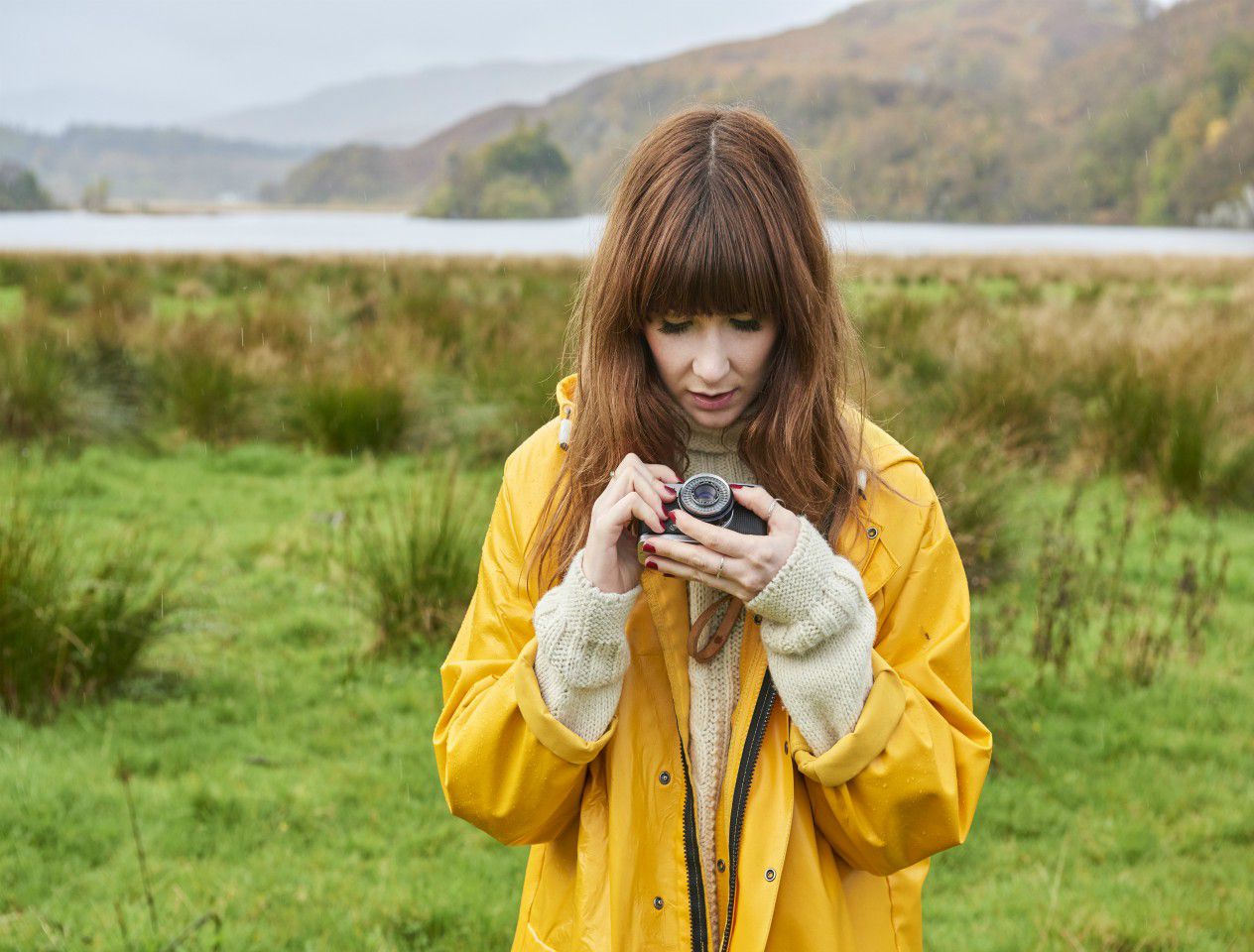By Dr. Sophia Yin
1966-2014 R.I.P.

Questions:
My adopted Chihuahua, Chico, has come a long way. However, if anyone comes to the house or if he is outdoors and meets a stranger and he is on the ground, he immediately wants to attack, following several displays of barking and aggressive lunging. One time he did clip a woman’s knee and drew blood. What do you advise for training Chico to be receptive to friendly people when he is outside and walking on the ground?
Gloria Aceti
Washington Crossing, PA
———————————————————————————–
We just adopted a terrier that is loving and sweet. Unfortunately, she exhibits extreme aggression at times. She does not do well with visitors coming into the house, and refused to stop barking and nipping at them. We encourage our guests to give her treats upon arrival, at the suggestion of our vet. We tell her NO firmly and attempt to grab her snout when she behaves this way, but nothing seems to work! She’s also aggressive when we try to wipe her feet. What do you suggest?
Reluctant to Return our Rescue Dog
Rocklin, CA
Answer:
Some people may read these descriptions and assume that these and other dogs who bite are just mean, but it turns out the most common cause of aggression in dogs is fear. It’s not fear brought on by abuse, but, rather, fear that developed because these dogs failed to receive the amount of socialization they needed starting before three months of age and continuing into early adulthood. Even from the short descriptions above, the telltale history is there. These dogs quickly got used to their adoptive families within a few days or weeks because it’s easy to get used to people who are constantly around them; but new people who pop into their lives fleetingly are another story.
Once Fear or Reactivity is Recognized, Take Action Before the Behavior Progresses to a Bite
Generally fearful dogs start off by trying to stay away from the things that scare them. But as they are confronted with scary situations repeatedly, they can learn that offense (barking, snapping, biting) is their best defense because it makes the scary people go away.
To see the body language of fear/anxiety, see Dog Bite Prevention Week: Poster on Body Language of Fear and Aggression and Dogs Bite When Humans Greet Inappropriately.
Treatment of Fear, Reactivity, or Aggression Focuses on Two General Approaches.
One approach to dealing with fear and aggression towards people is to train the dog to associate unfamiliar people with good things in a systematic/graded manner. This process is desensitization and classical counterconditioning (DS/CC),and it involves exposing the dog to the fear-inducing “stimulus” at a level where she barely responds and keeping her in a happy state, instead of a fearful or reactive state, by pairing the experience with things the dog likes (such as food, play, toys). The goal is that, as we systematically increase the level of the stimulus (how close the people are, how quickly they move, or how scary they look) while keeping Fido in a happy emotional state, the dog will systematically come to associate the scary people with this positive emotional state permanently.
Now, a lot of people try this method and have only partial success because they omit a few vital points.
- The first is that you must stay below
 the level of scariness where Fido barks, lunges or has any major reaction. This is referred to as staying below threshold. That usually means that the visitor must pretend Fido doesn’t exist. That is, stand sideways to the pet and look away as if the visitor is actually ignoring Fido even though he’s tossing treats. Ideally Fido just looks like he’s happy to get food.
the level of scariness where Fido barks, lunges or has any major reaction. This is referred to as staying below threshold. That usually means that the visitor must pretend Fido doesn’t exist. That is, stand sideways to the pet and look away as if the visitor is actually ignoring Fido even though he’s tossing treats. Ideally Fido just looks like he’s happy to get food. - The second key point is that the food or fun thing must be occurring the entire time the scary person is near. For instance, if the scary person is tossing small treats, the treats must come at a rapid enough rate that Fido doesn’t have a ton of time in between treats to decide that he’s still scared. Usually that means starting with treats coming rapidly at first and then slowing the treat rate down.
- Treats also have to continue long enough so that Fido decides that the person is safe. That may take just a minute or it may take several visits, depending on Fido. In the latter case, when the visitor is running out of treats, the dog should be removed from the room or the visitor should leave.
- The visitor also must make sure she doesn’t move too close too quickly or move in a quick or threatening manner since these can make the dog react defensively (e.g. going above threshold). (For tips on how to approach correctly so you aren’t accidentally threatening: refer to the How to Greet a Dog book and poster)
The second method for modifying behavior is to train dogs to perform appropriate replacement behaviors that are incompatible with the fearful behavior. This is called operant counterconditioning. The replacement behaviors we train must be ones the dog enjoys so that Fido is at the same time learning a positive association with the situation. For instance, when a dog is fearful, we can train the dog to focus on us and engage in fun behaviors such as heeling and other focus games that we have taught through reward-based training. Why do we have to be careful to avoid methods that use force or punishment to train or maintain the replacement behaviors? Say we train the dog to focus on us so he doesn’t bark or lunge and we do so using choke chain or pinch collar corrections. The dog may learn to focus but will do so out of fear of getting a correction. As a result, the dog is not likely to develop a positive association with the scary person/object/environment. The dog may outwardly look more controlled, at first, but side effects such as greater reactivity and fear are likely to occur in the near future. The dog may hide that he’s scared or that he wants to react, prompting us to put him in a situation where scary people are even closer to him. Then, at some point, he might not be able to contain himself and may break out in a reaction more severe than before.
As with the DS/CC we described in method 1, always start at a level where you can keep the dog happy and focused on you, keep the dog focused the entire time, end the session and remove the dog from the situation before he’s tired or you run out of treats. The better your technique and ability to train in a systematic fashion the faster the training will go. Technique is the difference between taking 10 minutes and 10 months to see a huge change. (For more information on technique, read Dog Training Classes Can and Should Be More Than Sit, Stay, Stand)
To learn more about:
Understanding How They Learn and The Principles that Guide Learning (Timing, Motivation, etc):
Why We Tend to Avoid Punishment and Aversives and Dominance Theory
Treatment Must Also Address Impulsivity
These general approaches are pretty straightforward and, with good technique, you can get dogs through situations relatively easily. However, it turns out there’s more to these situations than just using the DS/CC techniques in the reactive situations. In fact, the first thing that we often have to do is address the dog’s impulsivity (lack of impulse control) and his lack of ability to look to the owners for guidance, especially when he’s scared or highly excited. How are these things important? Impulsivity is the tendency for animals to perform behaviors without first thinking and evaluating the situation. Dogs with high impulsivity or low impulse control tend to rush towards items they want (food, people, dogs) and react in an extreme manner when excited (jump, whine, pace, bark, lunge). The more they practice acting impulsively, the more likely they will react impulsively when scared. These dogs also have an inability to look to their owners for direction, especially when they’re scared or distracted.
 Luckily, one program can address both of these issues. In my version of the Learn to Earn Program where dogs are required to automatically say “Please” by sitting for everything they want – every bit of kibble, petting, praise, attention, getting their leash on, going out the door—dogs learn that they can have what they want if they ask politely by sitting and looking at their owners for permission. In this intensive program, dogs can exhibit huge changes within a week. The trick is that the humans need to learn to reward the dog’s good behavior consistently and must be aware of their every interaction so that they don’t accidently reward unwanted behaviors, such as jumping, whining, and pushing for attention. So, at the same time, this program teaches owners how to give the right body signals and cues that their dog naturally understands and how to actually provide leadership and guidance through skill rather than force. As an added benefit, once owners have these skills they are better bonded to their pet and their pet feels more comfortable looking to their owners for guidance in the scary or highly exciting situations.
Luckily, one program can address both of these issues. In my version of the Learn to Earn Program where dogs are required to automatically say “Please” by sitting for everything they want – every bit of kibble, petting, praise, attention, getting their leash on, going out the door—dogs learn that they can have what they want if they ask politely by sitting and looking at their owners for permission. In this intensive program, dogs can exhibit huge changes within a week. The trick is that the humans need to learn to reward the dog’s good behavior consistently and must be aware of their every interaction so that they don’t accidently reward unwanted behaviors, such as jumping, whining, and pushing for attention. So, at the same time, this program teaches owners how to give the right body signals and cues that their dog naturally understands and how to actually provide leadership and guidance through skill rather than force. As an added benefit, once owners have these skills they are better bonded to their pet and their pet feels more comfortable looking to their owners for guidance in the scary or highly exciting situations.
The Step-by-Step Approach:
Now that you know some of the general approaches. Here’s the basic order of approach.
- First, keep safe: avoid all situations where the dog is fearful or aggressive until you have gained the skill to work productively in these situations. And when you do work with your dog with visitors and unfamiliar people present, you may choose to avoid having the visitors or unfamiliar people give your dog treats. It can be unsafe to rely on other people to give treats because the visitor may do something inappropriate such as moving too close, staring at, or suddenly trying to pet the dog. Or because they toss the treat too closely to themselves and the dog comes closer and then realizes he’s too close for comfort and snaps. Instead, you, the owner, can give the dog the treats or have the dog perform exercises where he focused on you. Also, it’s best to have the dog on leash, even on a gentle leader, snootloop or halti head collar. Make sure you’re holding the leash short enough that even if your dog does lunge towards people he can’t reach them (e.g. he can only lunge a few inches). For added safety, some dogs will need to learn to enjoy wearing a muzzle. You can cut a hole in the front of the muzzle to give treats. (See Training Dogs to Love Wearing a Muzzle)
- Second, identify all other situations where your dog is fearful or highly aroused (e.g. uncontrollable barking, whining, lunging) and address these issues too. This is important because fear of objects and other things can heighten fear of people. For instance, if your human-fearful dog gets scared of a loud noise or object in the morning and then goes for a walk, he’s more likely to react fearfully to people on his walk. Similarly if your dog practices rough, overly rowdy behavior, then, when he’s fearful, he’s more likely to display that fear with the same rough, overly rowdy behavior.
- Avoid the other fear and high arousal situations until you have the skills to modify the behavior in these situations. Generally you can gain some skills quickly and just start working in the situations at the distance or intensity that you can handle. For instance, if your dog gets scared around inanimate objects on walks, when you see the type of object he might bark or lunge at or run away from, you can work at the distance where you know you can keep him happy and focused on you.
- Take your dog through Dr. Yin’s version of the Learn to Earn Program so that you can systematically and quickly develop the ability to provide direction for your dog and so your dog can quickly develop the ability to control his impulsivity. Some dogs only take a few days to a week while others may take a month or two—the biggest variability is the human’s awareness of what they are doing. If owners could be 100% consistent in rewarding desired behaviors and removing rewards for unwanted behaviors, they’d have a nearly perfect dog in just a week or two but for many owners it takes weeks to become aware enough to be 80% consistent. The benefit of the Learn to Earn program is that even if you never reach professional level skill, you’ll still be way better at communicating with your dog and moving in ways that make your signals and intentions clear.

- DS/CC to the specific fear, reactive, and/or aggressive situations. Generally, this means going about your day in a normal manner, but, whenever you pass an unfamiliar person, you have your dog perform the fun heeling games so that he can focus on you while learning good things about the people that pass by. The better your technique, timing, and ability to use your body movement to help keep the dog focused on you, the more successful and efficient you’ll be. Similarly when guests visit, set the situation up so that you can keep Fido focused on performing replacement behaviors and then you separate him from the guests if he’s not completely comfortable and under good control.
- Also, DS/CC to any handling type procedures that are an issue: In many fear or reactivity cases, the dog is also difficult for being handled in certain ways (such as for toenail trims or grooming). Generally I recommend starting with classical DS/CC where the owner pairs the procedures with food and then increases interval between food until food is no longer needed (See Training a Dog to Enjoy Toenail Trims). Once less food is needed, I often switch to rewarding a specific behavior such as holding still for 10 seconds while being groomed and increasing the amount of time the dog must perform the good behavior to earn the reward.
This is the overall approach to the fearful or reactive dog in a nutshell. It’s all about addressing the dog’s overall ability to look to you for guidance, and your ability to be aware of his emotional state and to reward desired behaviors and remove rewards for unwanted behaviors. Because the techniques do actually involve skill and technique, unless your dog is extremely easy, you will most likely need coaching. But now you’ll know what to look for and you’ll be aware of the common mistakes to avoid.
Dr. Yin passed away in 2014 but her legacy lives on.
For further references, hopefully this will help https://www.vetfolio.com/learn/article/understanding-behavior-dominance-versus-leadership-in-dog-training
Bibliography
[Accessed: 24 AUG 2020]

.jpg)
.jpg)
.jpg)
.jpg)



































